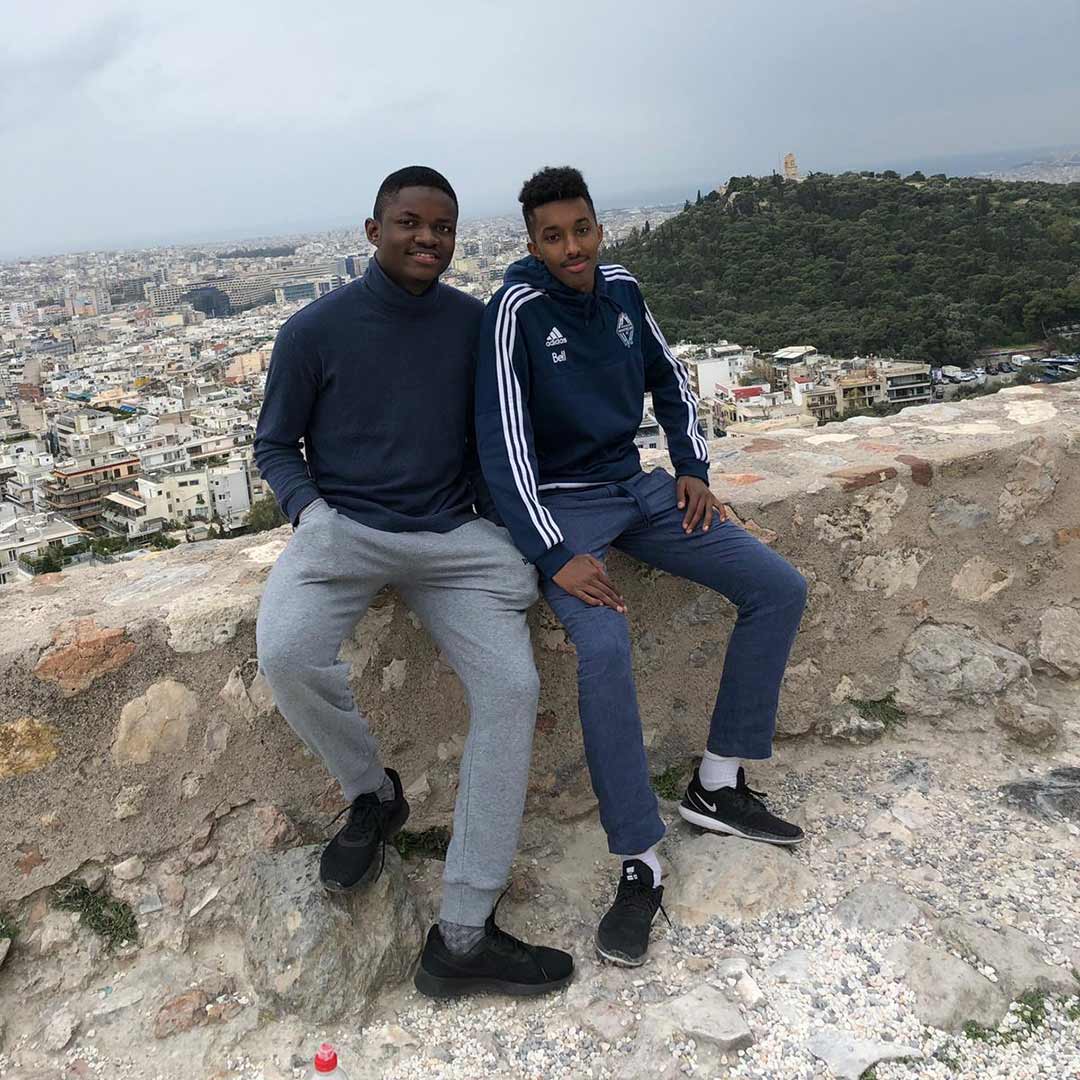- Academics
- Admissions & Enrollment Services
- Research
- Academic & Creative Spaces
- Strategic Partnerships
- Our Impact
- Student Affairs
- Campus & Community
Nigeria’s Teslim Sanni Committed to Preservation and Celebration of his Country’s Creative Heritage
June 23, 2020
Categories

Teslim Sanni, VCUarts Qatar BA in Art History, Class of 2020
Teslim Sanni, a graduate of VCUarts Qatar’s Class of 2020, says that merely learning about his country’s art heritage wasn’t enough for him. He felt compelled to take his learning and then use it to make a difference – ensuring that the artistic treasures and deep creative history of his native Nigeria weren’t lost to the ages.
For him, art is about understanding humanity. “Art History teaches you to appreciate the human being behind the statistic,” says Teslim Sanni,.



“You can look at mankind as an accumulation of facts and data, or you can view it as a collective of human behavior, emotions and responses to circumstances. Art History adopts the latter approach – through art.”
That insight, coupled with his interest in his country’s rich cultural heritage, seems to define Sanni’s personal journey – from his high school years in Nigeria, through joining VCUarts Qatar, to graduating with a Major in Art History in 2020.
Yet, he says, he almost didn’t get there. A high achiever in school, Sanni seemed pre-destined for a career in medicine or engineering. His heart, however, lay elsewhere.
“Nigeria’s history is steeped in art and culture,” he says. “The more I read about it, the more I learned that very few people were making an effort to conserve it. And as I delved deeper into the topic, I realized that I had to do something.”
Sanni says certain aspects of the history of his country had a profound influence on him – such as Nigeria’s loss of the Masks of Benin.
“In high school, I learned that centuries ago, colonists who ruled over Nigeria took two Benin Kingdom ceremonial masks from my country,” he explains. “They’re currently exhibited at the British Museum in the UK.
“That historical incident made me realize that Nigerian youth like myself need to understand the cultural significance and use of these masks – and similar artifacts – and not just view them as museum pieces. Studying Art History seemed to be the first step towards raising such awareness amongst my people.”
Sanni admits it was a challenge convincing his parents and his close family of his intended learning trajectory. But when they realized how determined he was, they supported him.
And, the fact that his brother was already a student at Northwestern University in Qatar in Qatar Foundation’s Education City – also home to VCUarts Qatar – made the question of where to apply easier. And so, he joined the art and design university in 2016.
Almost immediately, he sensed he’d made the right choice – the sheer cultural diversity of Education City’s student population added another dimension to his study of art history.
“Living and studying in a multi-university campus automatically put me in touch with people who shared their respective country’s art heritage with me,” he notes. “For instance, I learned from a friend who was studying at another university in the [Education City] campus, that contemporary Chinese artists raised under China’s One Child policy are more likely to take the self as a subject, rather than as a collective.”
While at VCUarts Qatar, he served as the Vice President, and then as the President, of VCUarts Qatar’s Student Government Association, the university’s student body. Keen on sport, he co-founded and captained the university’s first male football team, winning a prize for the second highest number of goals in an intercampus championship.
The sense of inclusion he experienced at every level in Education City, he says, heightened his ‘appreciation for the basic things in life’ – and nudged him towards his topic for his final project.
“I felt privileged to live and study in Education City,” says Sanni. “I knew my circumstances were an exception [rather] than the norm, so I wanted to explore the art works of human beings who were not as fortunate as I was. This led me to explore the works of the Sweden-based Iraqi artist Hayv Kahraman for my final thesis.
“Researching and learning about Kahraman’s experiences in war-torn Iraq, and the challenges she had to face as a refugee in a Scandinavian country, made me all the more determined to preserve Nigerian art back home. ”
Today, with his project completed, his studies behind him, and the foundation to his dreams, laid, Sanni says he’s gained far more than he could have imagined possible.
“Art History provides students with an immense array of transferable skills; it sharpens emotional intelligence, critical thinking, and socio-political awareness,” he says. “Organizations and employers value these competencies as they balance the black-and-white objectivity of data-driven digital information, with a deeper understanding of human circumstances and behavioral responses.”
For the moment though, the Class of 2020 graduate can’t wait to get home – for a purpose.
“During my semester breaks back home, I used to visit the few museums we have in Nigeria,” he says. “I held one-on-one discussions with my country’s art history experts on ways to methodically conserve Nigeria’s artistic heritage.
“I did these with an aim in mind: I want to help build an art history education centre where Nigerian youth can learn, appreciate – and thereby be moved to preserve – the country’s history of creative genius.”

